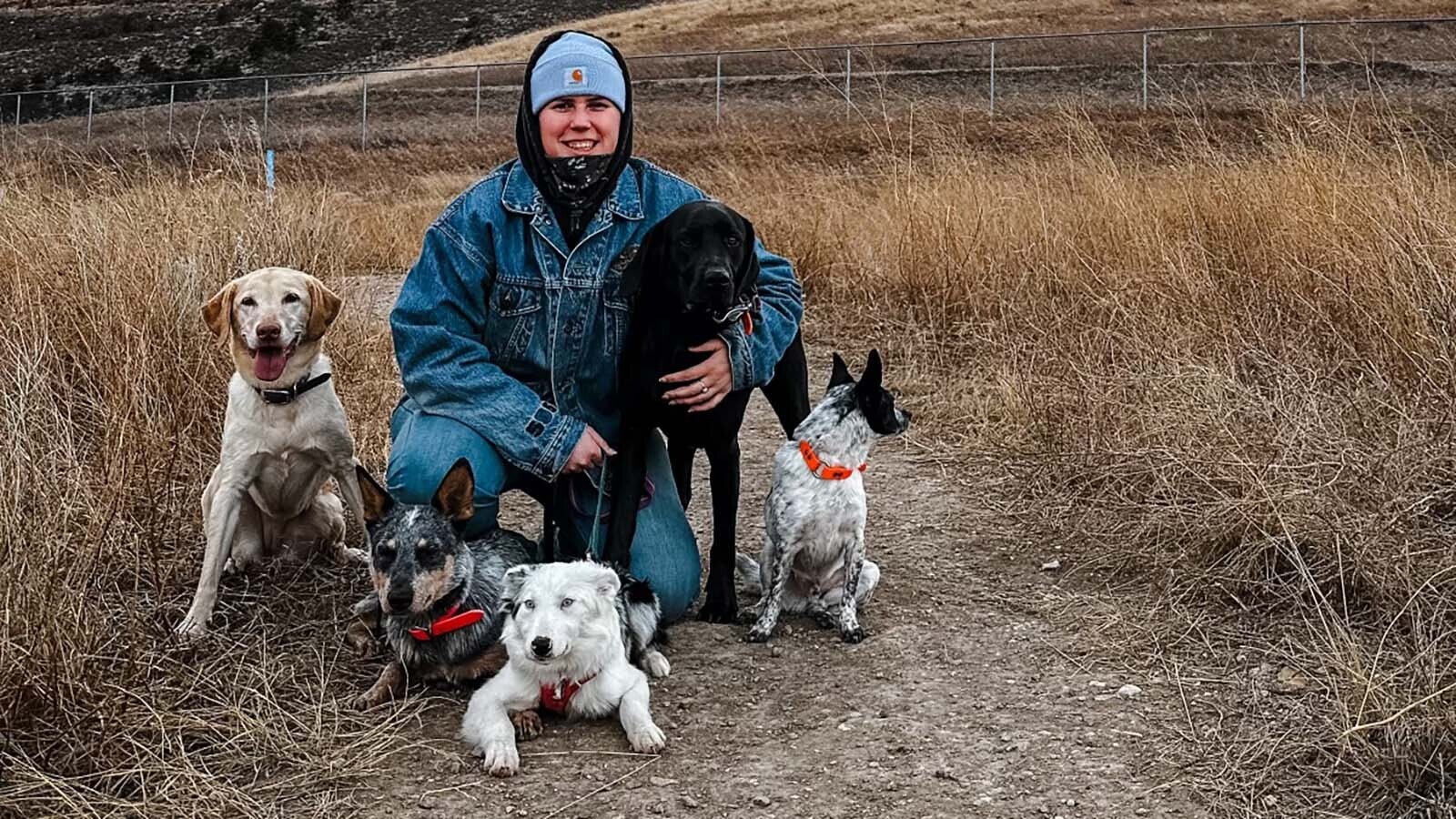It was billed as the race of bronco versus thoroughbred, and it ended with a wiry 33-year-old rider and former laundry wagon horse making Wyoming proud.
Across 534 miles of challenging terrain between Evanston, Wyoming, and Denver, 27 horses vied for Denver Post sponsored prizes worth $1,250 — with the winner promised $500.
In May 1908, Henry Ford was getting ready to release his Model T and former Rough Rider Teddy Roosevelt was still president.
The West remained a place for tests of endurance, and horse and riders looked to cross the Cowboy State and make it down to the Mile High City in the shortest time possible. The catch was the riders had to maintain a healthy horse.
“It is up to the men who are entered in this race to show the men of the East that when it comes to knowing a horse, when it comes to understanding man’s best friend, the Westerner does not take off his sombrero to a man from any country,” stated the Post’s rules, which were republished in Evanston’s The Wyoming Press on May 9, 1908.
There were 16 entrants from Colorado, three from Utah, six from Wyoming and one each from Nebraska and New Mexico.
Rules called for riders and horses to be weighed, horses to be marked on their hooves, and contestants to sign an entry form stating they understood the rules.
The race included 50-mile mandatory pit stops where the horses would be evaluated by veterinarians. Contestants, saddles and other equipment needed to weigh at least 160 pounds to be eligible.
It was a national spectacle at the time, claiming headlines in newspapers across the country.
It also inspired a star-studded Hollywood production titled “Bite the Bullet, starring Gene Hackman, Candice Bergen and James Coburn. The film takes a few liberties, like changing the year of the race and making the distance of the race longer.
Wyoming Start
Evanston prepared for the launch of the race by raising $600 for a party that included a barbecue, boxing, horse races and a parade. On Saturday, May 30, 1908, the riders raced out of Evanston at 6 a.m.
Representing Wyoming was Charles Workman of Cody, Joe James of Encampment, James Edwards of Diamondville, W.C. Casto of Fort Bridger, Arthur Holman of Cody, and David Wilcox of Saratoga.
A Billings, Montana, newspaper described Workman a year later as a “small, wiry” man with a smooth-shaven face and someone who carried the general air that “he never stumbled into anything he could not get out of.”
Reporters from the Denver Post covered their event, and they were accompanied by a special representative for the paper, Wyoming cowboy Charlie Irwin.
In the first leg of the race, Wyoming’s Workman covered the 70 miles to Granger in 9 hours and 40 minutes on his buckskin bronco “Teddy.” Charles Trew of Colorado and John Smith of New Mexico arrived next. As the rest of the pack arrived, the top three headed to Green River.
The Wyoming Stockgrower and Farmer in its June 4, 1908 edition, reminded readers where Teddy was discovered.
“He is one of Cody’s common horses owned by Mr. Erickson of the Cody Steam Laundry and worked two years here on the laundry wagon,” the newspaper reported.
Irwin, in his automobile, poured out sacks of flour on the course so night riders well behind Workman and other leaders would follow the right route.
By Monday, June 1, Cheyenne’s Wyoming Tribune reported Workman had reached Rawlins, and Trew, on his thoroughbred “Archie,” had dropped back in the race. Nineteen riders remained in the quest, but the paper emphasized Workman’s success.
“‘You can’t kill a buckskin’ is an old adage among the cowpunchers and the success of Charlie Workman who is 30 miles ahead of all competitors,” the newspaper reported. “This is not a new experience for Teddy as his rider in order to enter the race rode the animal all the way from the Big Horn basin through Lander and the old stage route to Evanston in four days. So, he knows pretty well what his mount will accomplish.”
Hopeful Vet
A Colorado veterinarian said he believed the Colorado horses would surge once they hit the Cheyenne to Denver leg.
“The Colorado horses will then go more freely as they think they are going home while the Cody animal will be just as quick to see that is going away from home and will begin to need urging,”Dr. Vanness told the Wyoming Tribune on June 2.
On June 3, The Wyoming Tribune shared an inside scoop that former Sheridan editor F. H. Barrow, who had joined the Tribune as state news and telegraph editor, was in Denver.
He was commissioned by people in Cody to wager $3,000 “on the best odds he could get” that Workman and Teddy would win.
Barrow was quoted in the Denver Post as saying that Workman had been riding his horse 50 miles a day for two months in preparation for the race.
“The hope of the people of Cody and northern Wyoming is centered in him, and they feel confident that Teddy will carry off the honors,” Barrow said.
On June 3, Teddy and Workman were riding in a pack with three others that included Kerns, Means and Edwards.
Once the leaders arrived in Cheyenne, a Colorado horse named Sam ridden by Frank Wykert of Severance, Colorado, had made up time and five contestants were preparing to rest and head south to Denver.
Horses at the back of the pack in Laramie were surmised to have riders resting them, knowing they could not get the prize money for a finisher, but the Denver Post had offered $300 to the rider who finished the race with the horse judged by veterinarians to be in the best condition.
On June 5, the race arrived at the Denver city limits with Sam, the Denver horse, and Teddy both being mandatorily paced by two other horses to the finish line to ensure no danger to the horses.
Mandated Pacers
When the horses were in Brighton, Colorado, representatives of the Colorado Bureau of Child and Animal Protection “declared that both of the horses were in a condition unfit to travel further, and the two leaders were thus deprived of their chances to win the race,” the Wyoming Tribune reported.
As a solution, the two riders and their horses were required to be paced into Denver.
“Teddy and Sam finished so close together that there was for some time a question as to which should be awarded the first prize, both riders claiming they were held back by their pacers,” The Wyoming Tribune reported. “The race was therefore not decided by the horses, but by the pacemakers, whose sympathies led them to favor the Colorado man all they dared.”
The winners took six days, eight hours and 18 minutes to cover the distance. In the end, the Denver Post gave them both first place.
One story printed in the Post was that Workman nearly lost the race after being woken in Cheyenne and told Wykert had already left on Sam and was being paced by a white horse.
Workman jumped up, saddled his horse and took off riding hard to catch the horses for 10 miles before catching them only to understand that it was not Wykert at all but two men on fresh horses riding south.
Another story from the race is of a rider on the first day out of Evanston whose horse got kicked.
He walked the horse initially to ensure no injuries to the horse and when night came, he led the horse in the darkness down what he thought was the course. When morning came, he found he had been walking in circles around a pasture.
As winners, Workman and Wykert, according to some reports, split the first-place earnings of $500 and in others a combined first-and-second place earnings of $750. They also had to find a way to divide a silver saddle and other prizes.
Cody Welcome
After returning to Cody on June 24, 1908, Workman was welcomed by a crowd, a speech by a state senator and others.
“Charlie explained to the race to the vast crowd from start to finish, and confirmed the conclusion held by all, that if he had not been stopped, he would have won, alone and easy,” the newspaper reported.
In Cody he received an additional $200 in gold in a silk bag and a $7.50 certificate to a local store.
Meanwhile, the Fort Collins Express and Review reported on June 10, 1908, that “there were many reasons that Wykert and his horse Sam were the real winners.”
Workman would go on to marry in 1910 and have three children. His first wife died in the flu pandemic in 1918. He married again in 1922.
Workman’s name was listed on a full-page ad in the Park County Enterprise as a distributor for Golden Grain Beer along with a partner named O.D. Marx in 1913.
In 1921, he went to Alaska on a nine-week hunting trip that was covered in the Northern Wyoming Herald and was described as a “former businessman, and guide and hunter of Wyoming.
The Alaska trip garnered him and his partner, a Cody taxidermist, two bull moose,10 caribou, two white goats, two saddleback rams and two wolverines.
In 1922, Workman bought the interests of a secondhand store on Sheridan Avenue after being out of business for a few years. “Cody friends are glad to see him in the harness,” the Northern Wyoming Herald reported on Nov. 22, 1922.
In 1924, his name is listed first in full page ad in the Northern Wyoming Herald on March 19 titled “Boosting Cody” and encouraging citizens to keep streets clean, yards attractive and “be generous in thought, word and deed” to neighbors and fellow citizens.
Sheriff Race And Arson
In 1926, he ran for sheriff of Park County and used a photo of him on Teddy as part of the advertisement. He lost that race, but in 1927, his name along with his wife were in the headlines for serious reasons.
Workman’s second wife was charged in the arson of his grocery and furniture store in 1927 after gasoline was found to have started the blaze. He was reportedly away at the time.
“Sheriff Blackburn testified that Mrs. Workman had made a confession of having set the fire herself while her husband was out of town,” the Powell Tribune reported Feb. 17, 1927.
Workman sold the store that same month.
Once in district court, a plea deal was arranged and Workman’s wife pleaded guilty to arson, was fined $400 and given a suspended jail sentence for good behavior.
Charles Workman received a warning from the judge that he better go to work at some “honorable vocation.” The judge told him the circumstances surrounding the burning of the store “pointed very closely to his manipulations,” The Cody Enterprise reported on Nov. 16, 1927.
Workman died on March 8, 1950. He was 75.
A rider on a horse appears on his tombstone, a testament to a colorful life that began riding one of the great endurance races in the West.
Dale Killingbeck can be reached at dale@cowboystatedaily.com.













